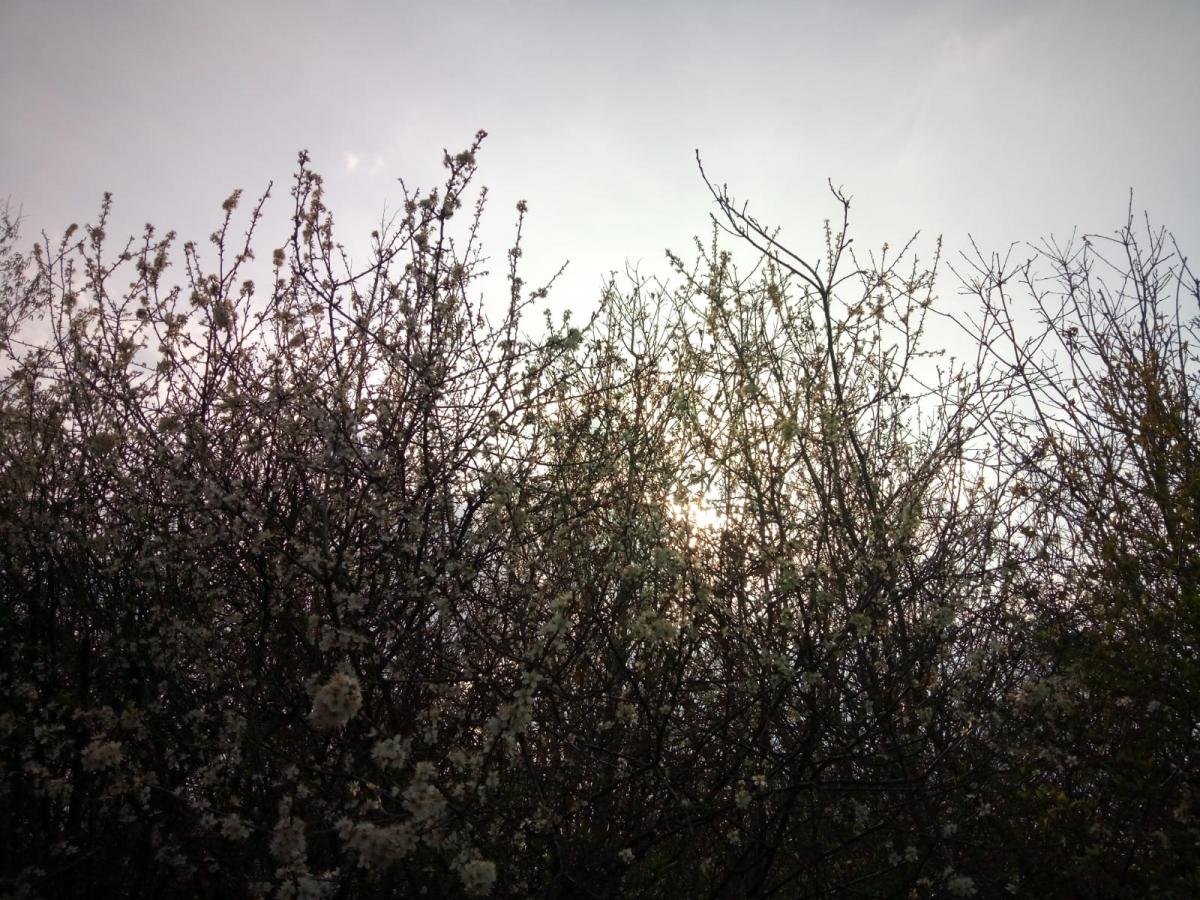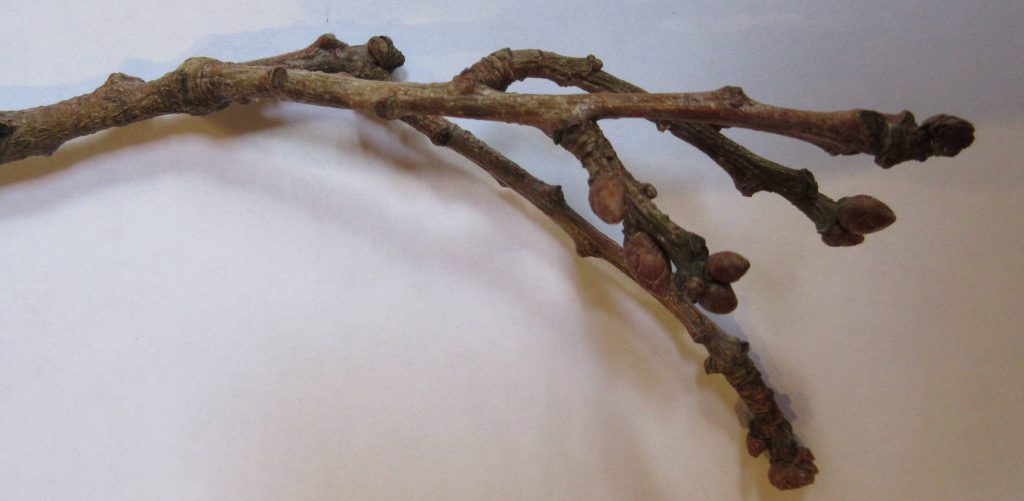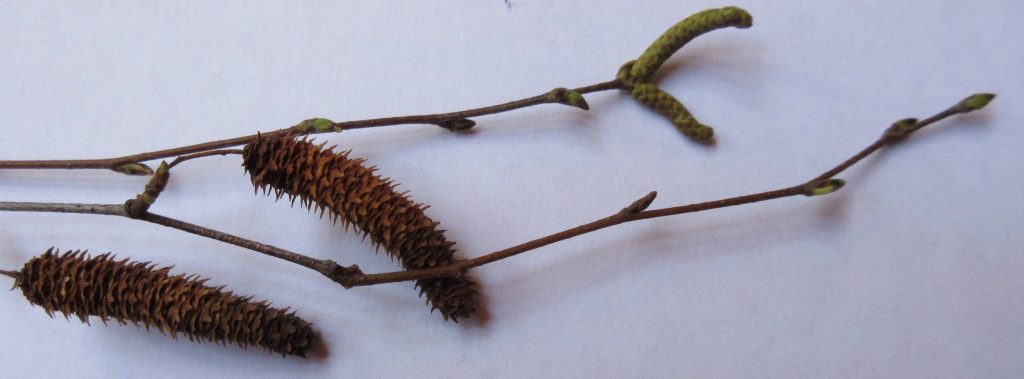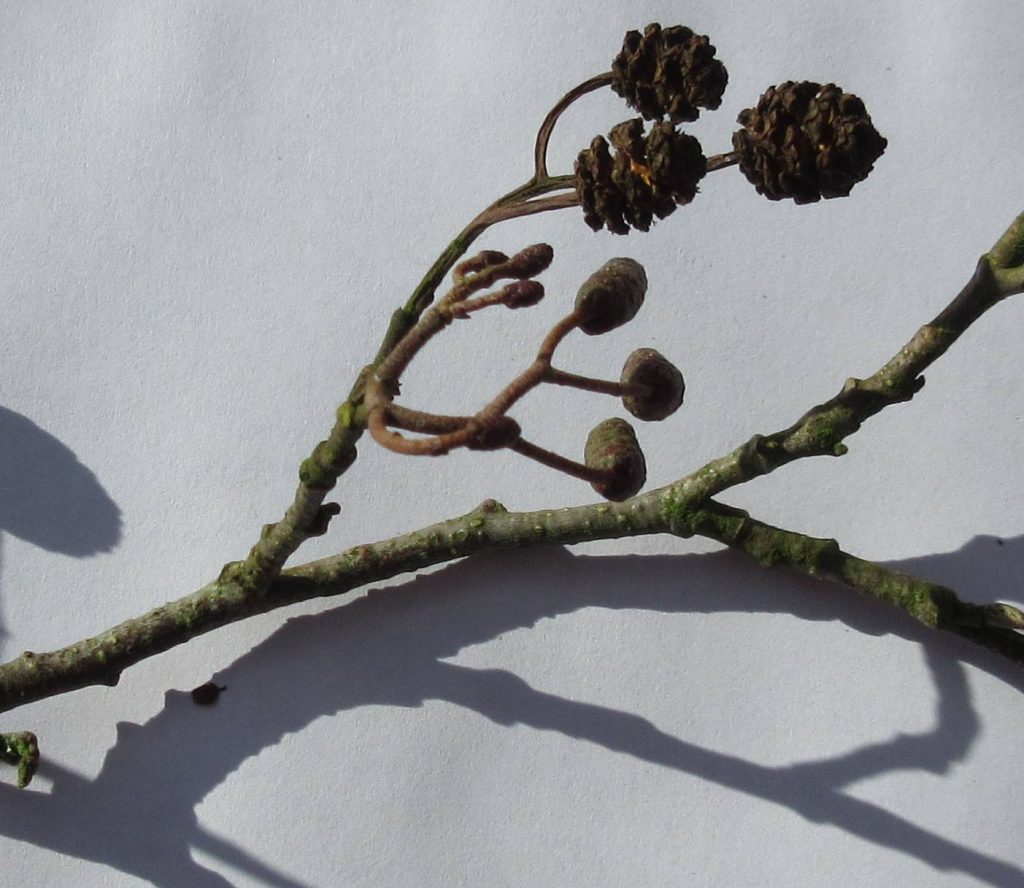
Tree twigs in winter
Flowers, leaves and fruit help us to identify trees during spring, summer and early autumn. When it comes to winter you might think the clues to knowing your oak from your ash tree may have all disappeared, but if you take a closer look at their leaf buds and twigs you’ll be surprised at how you can become an expert tree spotter!
Leaf buds
Leaf buds positioned at the end of twigs are known as terminal buds and are often the largest. Buds growing along the twig are called lateral buds and these are can be arranged in three ways:
- Opposite – buds in pairs directly either side of the stem (as found in ash, sycamore, spindle and dogwood)

- Alternate – buds in pairs arranged in turn on opposite sides of the stem (as found in hazel, lime, hawthorn, rowan and elms)

- Spiral – buds whorl alternately around the stem (as found in aspen, blackthorn and oak)

A subtle clue to which tree species you are looking at can be found by looking at how the buds are held on the twigs and the shape or colour of the buds. Oak and beech buds stick out at an angle from the twig, unlike willows where their buds are tightly pressed against the twig.
A very distinctive characteristic of beech trees are their sharply pointed buds. Many others have oval shaped buds so you’ll need to look for other clues. For example, ash trees have very noticeable black buds.
If you a take a very close look at the buds on oak, elm and birch trees you can see small scales protecting the bud inside.

Twigs
Twigs hold clues as to what tree you are looking at, too. It’s all about their texture – whether they are smooth, hairy or spikey. If there are spines it could be a hawthorn or blackthorn and corky ridges can be found on alder and field maple. Colour can also be a helpful indicator such as the red stems of dogwood in autumn, or the greens and yellows of willows.
Birch tree twigs grow distinctive catkins while alder trees have characteristic dark brown cones which can hang on long after the seeds have gone.
Top tip: Take a look at the all the features of trees when you are trying to identify them – their buds, twigs and colour all help in their identification. Some may keep hold of their seeds in catkins or cones, such as birch and alder trees, so these provide useful hints as to what they are. Other signs may be found on the ground where carpets of leaves and lost fruit might lie.


Before you set out on your next walk in the Heart of England Forest, why not download The Woodland Trust’s Twig ID sheet – it’s a useful aid to identifying many of the trees in the Forest. If you’d like to share your winter photos of the Forest then do get in touch – we’d love to see them.



